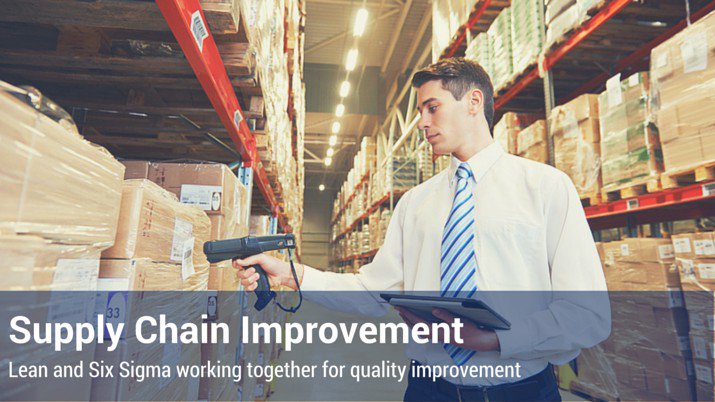Improving Your Supply Chain with Lean Six Sigma

Last Updated March 8, 2024
Companies that once viewed Six Sigma and Lean as separate and possibly competing methodologies are now discovering that these two philosophies of quality improvement are indeed complementary. When used together (Lean Six Sigma), they can be exceptional in eliminating waste and variance in the supply chain.
Lean Six Sigma can help enhance supply chain efficiency in the following areas.
Perfect Order Fulfillment – This is measured in the percentage of orders meeting delivery performance with complete and accurate documentation and no delivery damage. Six Sigma methodology can help maximize order fulfillment by identifying where possible problems lie, such as outdated planning processes and inefficient execution systems. Lean can then be used to target areas of waste and enhance performance.
Reduce Order Fulfillment Cycle Time – A Lean Six Sigma review of the company’s order fulfillment system helps identify problems that need to be addressed. This review will most likely conclude that some obvious improvements are in order. Improvement may require system integration, automated picking, automated shipping planning, automated shipment verification and reduced paperwork. The Six Sigma DMAIC cycle can help improve current processes; DMADV can help implement new processes.
Increase Supply Chain Flexibility – Supply chain performance requires a quick response to changes in supply and demand through the ups and downs of business cycles, as well as during crises. Companies with the most agile supply chains are those that are tailored to the needs of the customer. Establishing critical to quality (CTQ) customer requirements in the Define Phase of Six Sigma helps companies build customer focus and thus flexibility into their supply chains.
Zero Errors – Any supply chain that is losing efficiency because of a high error rate in the system is a prime candidate for Lean improvement. The Poka-Yoke or mistake-proofing Lean approach prevents mistakes by forcing the user to do a task one way. For example, lawnmowers now have safety bars that must be engaged before the mower will start. The mower will stop when the safety bar is released.
Implementing the 5S Lean method – Sort out, Set in Order, Shine, Standardize, and Sustain – also reduces errors that interrupt the supply chain efficiency by providing a clean, safe, efficient, and uncluttered environment.
Zero Waste – Lean methodology was created to eliminate waste, which can be defined as activities that don’t add value to the product or customer. Lean helps supply chains function more efficiently by targeting and eliminating non-value added processing:
- Over-production – Producing more ahead of demand as the result of a speculative forecast results in high inventory costs.
- Transportation – Unneeded movement of materials adds to production cost and cycle time. Lean seeks to eliminate unnecessary transportation.
- Non-value added processing – Poor production facility layouts cause additional work that adds no value to the product. Lean simplifies production to make the supply chain operate more efficiently.
Increased Revenue – Organizations that use Lean Six Sigma to make their supply chains operate more efficiently are able to provide a consistent service level to their customers. Dependable service leads to satisfied customers, which gives organizations more pricing power and higher revenues.
Organizations that apply Lean Six Sigma principles to their supply chains can create a competitive advantage, increase revenue and improve employee morale. To learn more about Six Sigma and Lean Six Sigma training, click the button below.




